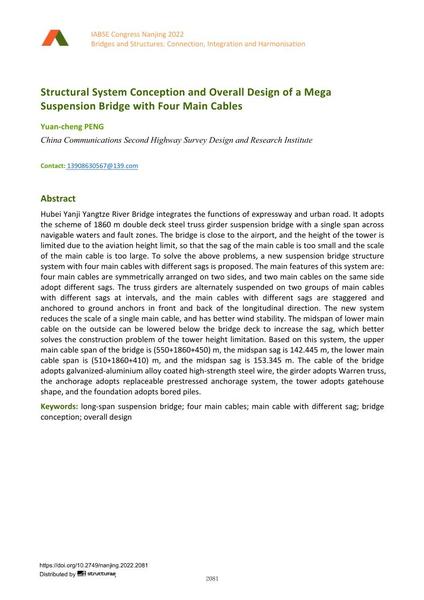|
Abstrakt:
|
Hubei Yanji Yangtze River Bridge integrates the functions of expressway and urban road. It adopts the scheme of 1860 m double deck steel truss girder suspension bridge with a single span across navigable waters and fault zones. The bridge is close to the airport, and the height of the tower is limited due to the aviation height limit, so that the sag of the main cable is too small and the scale of the main cable is too large. To solve the above problems, a new suspension bridge structure system with four main cables with different sags is proposed. The main features of this system are: four main cables are symmetrically arranged on two sides, and two main cables on the same side adopt different sags. The truss girders are alternately suspended on two groups of main cables with different sags at intervals, and the main cables with different sags are staggered and anchored to ground anchors in front and back of the longitudinal direction. The new system reduces the scale of a single main cable, and has better wind stability. The midspan of lower main cable on the outside can be lowered below the bridge deck to increase the sag, which better solves the construction problem of the tower height limitation. Based on this system, the upper main cable span of the bridge is (550+1860+450) m, the midspan sag is 142.445 m, the lower main cable span is (510+1860+410) m, and the midspan sag is 153.345 m. The cable of the bridge adopts galvanized-aluminium alloy coated high-strength steel wire, the girder adopts Warren truss, the anchorage adopts replaceable prestressed anchorage system, the tower adopts gatehouse shape, and the foundation adopts bored piles.
|

